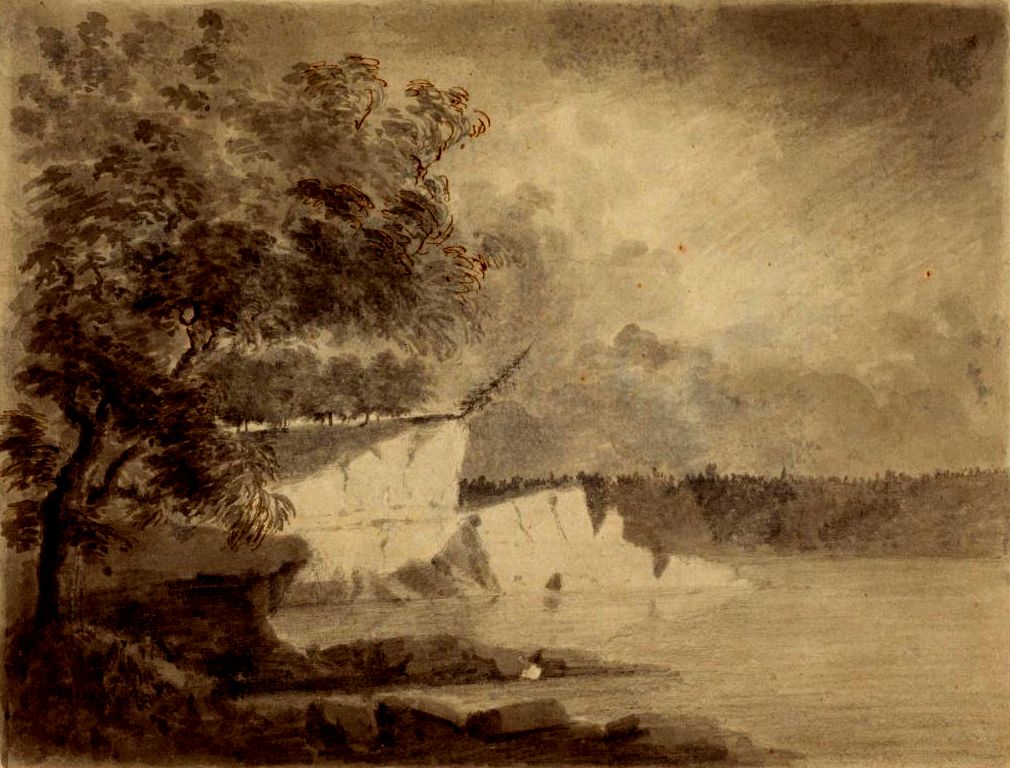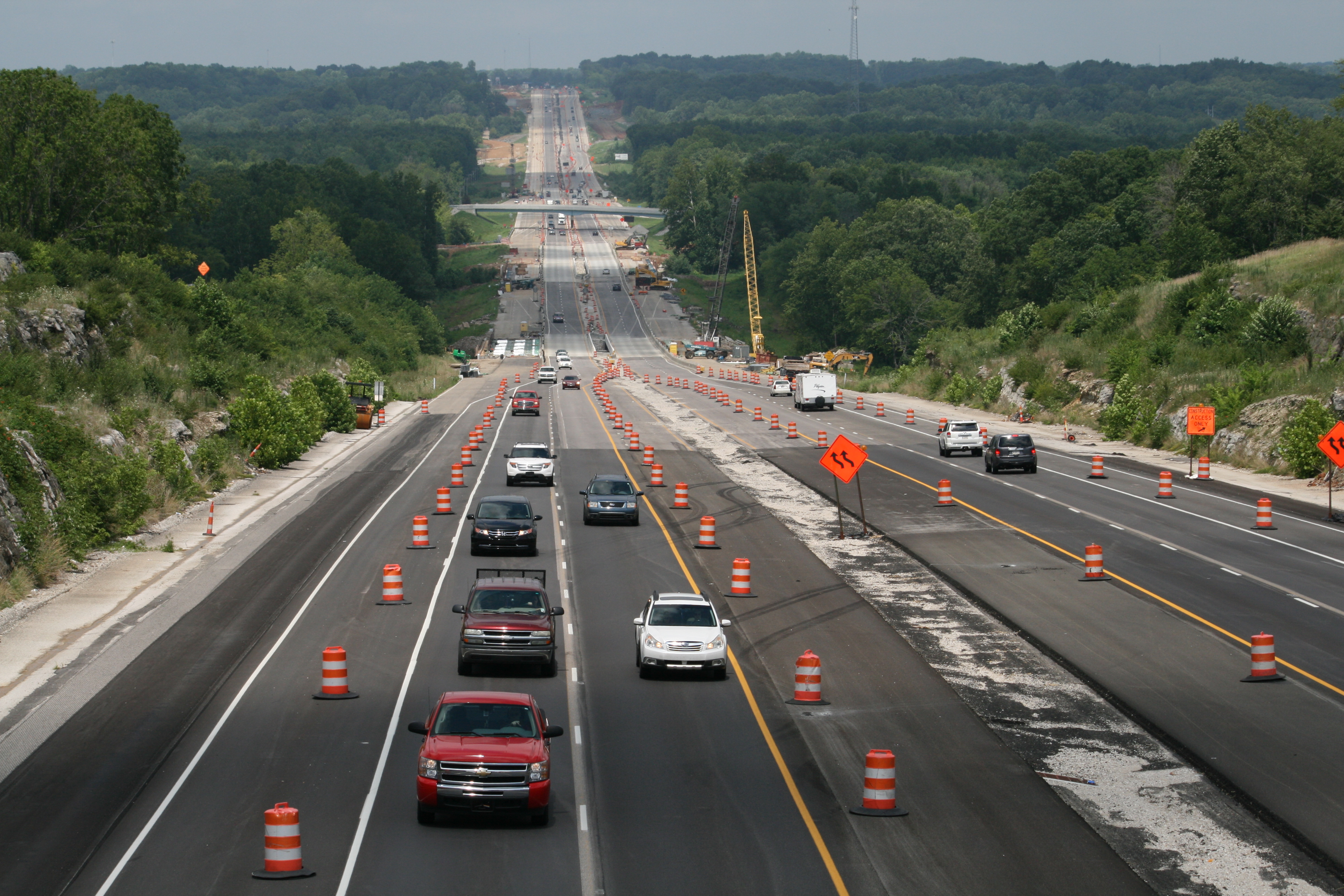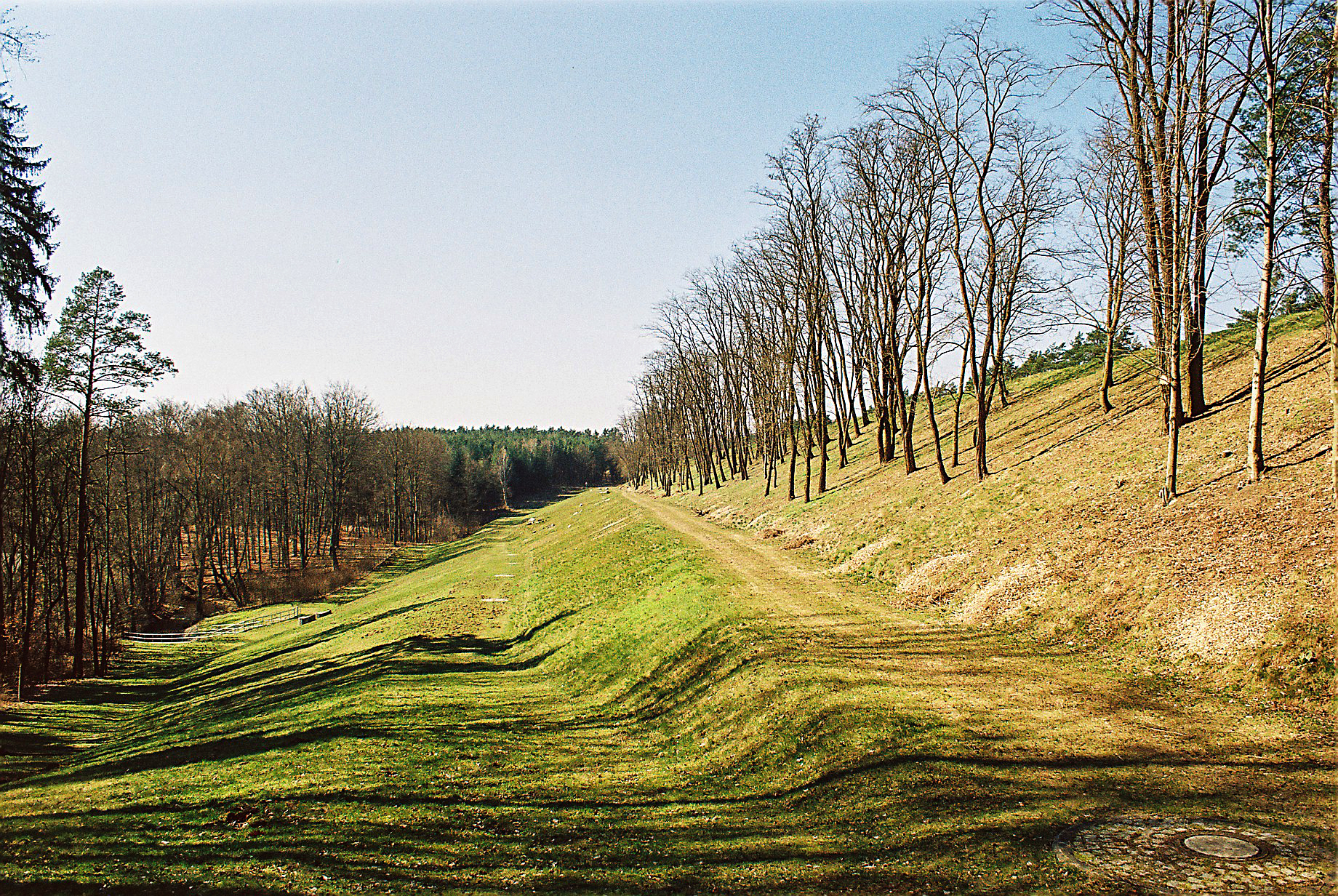|
Eagle Marsh
Eagle Marsh is an wetland preserve located in southwest Fort Wayne, Indiana. It is run by the Little River Wetlands Project, with the aim to restore the Little River watershed, a tributary of the Wabash River. Eagle Marsh abuts Interstate 69 in Indiana, Interstate 69 on its western boundary and is located on a Continental divide between the Mississippi watershed and the Great Lakes watershed. History The marsh was drained in the 1800s by ditches which changed the hydrology in the area to make it a more suitable location for settlement. Immediately prior to its restoration and purchase in 2005, the property had been farmland which would regularly flood despite the Drainage tile, drainage tiles which had been added. The United States Army Corps of Engineers constructed a berm in the marsh to prevent invasive Asian carp in North America, Asian carp from moving into the Great Lakes Basin by reducing the frequency and duration of inter-basin water flows during large rain events. ... [...More Info...] [...Related Items...] OR: [Wikipedia] [Google] [Baidu] |
Eagle Marsh In Winter
Eagle is the common name for the golden eagle, bald eagle, and other birds of prey in the family of the Accipitridae. Eagles belong to several groups of Genus, genera, some of which are closely related. True eagles comprise the genus ''Aquila (bird), Aquila''. Most of the 68 species of eagles are from Eurasia and Africa. Outside this area, just 14 species can be found—two in North America, nine in Central and South America, and three in Australia. Eagles are not a natural group but denote essentially any kind of bird of prey large enough to hunt sizeable (about 50 cm long or more overall) vertebrates. Etymology The word "eagle" is borrowed into English from and , both derived ultimately from ("eagle"). It is cognate with terms such as , and . It is broadly synonymous with the less common English term "erne" or "earn", deriving from , from , in which it acts as the usual word for the bird. The Old English term is turn derived from and is cognate with other synonymous ... [...More Info...] [...Related Items...] OR: [Wikipedia] [Google] [Baidu] |
Wetland
A wetland is a distinct semi-aquatic ecosystem whose groundcovers are flooded or saturated in water, either permanently, for years or decades, or only seasonally. Flooding results in oxygen-poor ( anoxic) processes taking place, especially in the soils. Wetlands form a transitional zone between waterbodies and dry lands, and are different from other terrestrial or aquatic ecosystems due to their vegetation's roots having adapted to oxygen-poor waterlogged soils. They are considered among the most biologically diverse of all ecosystems, serving as habitats to a wide range of aquatic and semi-aquatic plants and animals, with often improved water quality due to plant removal of excess nutrients such as nitrates and phosphorus. Wetlands exist on every continent, except Antarctica. The water in wetlands is either freshwater, brackish or saltwater. The main types of wetland are defined based on the dominant plants and the source of the water. For example, ''marshes'' ar ... [...More Info...] [...Related Items...] OR: [Wikipedia] [Google] [Baidu] |
Fort Wayne, Indiana
Fort Wayne is a city in Allen County, Indiana, United States, and its county seat. Located in northeastern Indiana, the city is west of the Ohio border and south of the Michigan border. The city's population was 263,886 at the 2020 census, making it the second-most populous city in Indiana after Indianapolis, and the 83rd-most populous city in the U.S. The Fort Wayne metropolitan area, consisting of Allen and Whitley counties, has an estimated population of 463,000. Fort Wayne is the cultural and economic center of northeastern Indiana. Fort Wayne was built in 1794 by the United States Army under the direction of American Revolutionary War general Anthony Wayne, the last in a series of forts built near the Miami village of Kekionga. Named in Wayne's honor, the European-American settlement developed at the confluence of the St. Joseph, St. Marys, and Maumee rivers, known originally as Fort Miami, a trading post constructed by Jean Baptiste Bissot, Sieur de Vin ... [...More Info...] [...Related Items...] OR: [Wikipedia] [Google] [Baidu] |
Wabash River
The Wabash River () is a U.S. Geological Survey. National Hydrography Dataset high-resolution flowline dataThe National Map accessed May 13, 2011 river that drains most of the state of Indiana, and a significant part of Illinois, in the United States. It flows from the headwaters in Ohio, near the Indiana border, then southwest across northern Indiana turning south near the Illinois border, where the southern portion forms the Indiana-Illinois border before flowing into the Ohio River. It is the largest northern tributary of the Ohio River and third largest overall, behind the Cumberland River, Cumberland and Tennessee River, Tennessee rivers. From the dam near Huntington, Indiana, to its terminus at the Ohio River, the Wabash flows freely for The Tippecanoe River, White River (Indiana), White River, Embarras River (Illinois), Embarras River and Little Wabash River are major tributaries. The river's name comes from a Miami-Illinois language, Miami word meaning "water over whi ... [...More Info...] [...Related Items...] OR: [Wikipedia] [Google] [Baidu] |
Interstate 69 In Indiana
Interstate 69 (I-69), also known as the Iraq Afghanistan Veterans Memorial Highway south of Indianapolis, in the US state of Indiana travels southwest to northeast, connecting all 3 of the state's largest cities, Evansville, Indianapolis, and Fort Wayne. The highway proceeds north to the state of Interstate 69 in Michigan, Michigan, reaching its capital city, Lansing, Michigan, Lansing and beyond, and is planned to eventually proceed south to the state of Interstate 69 in Kentucky, Kentucky and beyond. I-69 begins in Southwestern Indiana at the interchange with U.S. Route 41 in Indiana, U.S. Route 41 (US 41) and Veterans Memorial Parkway in Evansville, Indiana, Evansville and crosses the state line traveling due northeast into Michigan northwest of the town of Fremont, Indiana, Fremont. Between Interstate 64 in Indiana, I-64 and Bloomington, four new terrain sections were opened in phases in 2009, 2012, and 2015 as part of the planned national extension of I-69 so ... [...More Info...] [...Related Items...] OR: [Wikipedia] [Google] [Baidu] |
Continental Divide
A continental divide is a drainage divide on a continent such that the drainage basin on one side of the divide feeds into one ocean or sea, and the basin on the other side either feeds into a different ocean or sea, or else is endorheic, not connected to the open sea. Every continent on Earth except Antarctica (which has no known significant, definable free-flowing surface rivers) has at least one continental drainage divide; islands, even small ones like Killiniq Island on the Labrador Sea in Canada, may also host part of a continental divide or have their own island-spanning divide. The endpoints of a continental divide may be coastlines of gulfs, seas or oceans, the boundary of an endorheic basin, or another continental divide. One case, the Great Basin Divide, is a closed loop around an endorheic basin. The endpoints where a continental divide meets the coast are not always definite since the exact border between adjacent bodies of water is usually not clearly defined. Th ... [...More Info...] [...Related Items...] OR: [Wikipedia] [Google] [Baidu] |
Mississippi Watershed
The Mississippi River is the primary river of the largest drainage basin in the United States. It is the second-longest river in the United States, behind only the Missouri. From its traditional source of Lake Itasca in northern Minnesota, it flows generally south for to the Mississippi River Delta in the Gulf of Mexico. With its many tributaries, the Mississippi's watershed drains all or parts of 32 U.S. states and two Canadian provinces between the Rocky and Appalachian mountains. The river either borders or passes through the states of Minnesota, Wisconsin, Iowa, Illinois, Missouri, Kentucky, Tennessee, Arkansas, Mississippi, and Louisiana. The main stem is entirely within the United States; the total drainage basin is , of which only about one percent is in Canada. The Mississippi ranks as the world's tenth-largest river by discharge flow, and the largest in North America. Native Americans have lived along the Mississippi River and its tributaries for thou ... [...More Info...] [...Related Items...] OR: [Wikipedia] [Google] [Baidu] |
Great Lakes Watershed
The Great Lakes Basin consists of the Great Lakes and the surrounding lands of the states of Illinois, Indiana, Michigan, Minnesota, New York, Ohio, Pennsylvania, and Wisconsin in the United States, and the province of Ontario in Canada, whose direct surface runoff and watersheds form a large drainage basin that feeds into the lakes. It is generally considered to also include a small area around and beyond Wolfe Island, Ontario, at the east end of Lake Ontario, which does not directly drain into the Great Lakes, but into the Saint Lawrence River. The Basin is at the center of the Great Lakes region. Demographics The basin is home to 37 million people. It hosts seven of Canada's 20 largest census metropolitan areas, namely Toronto, Hamilton, Kitchener–Cambridge–Waterloo, London, St. Catharines– Niagara, Windsor, and Oshawa. Also, the American cities of Duluth, Milwaukee, Chicago, Gary, Detroit, Toledo, Cleveland, Erie, Buffalo, Rochester, and Syracuse, among others, are lo ... [...More Info...] [...Related Items...] OR: [Wikipedia] [Google] [Baidu] |
Drainage Tile
Tile drainage is a form of agricultural drainage system that removes excess sub-surface water from fields to allow sufficient air space within the soil, proper cultivation, and access by heavy machinery to tend and harvest crops. While surface water can be drained by pumping, open ditches, or both, tile drainage is often the most effective means of draining subsurface water. The phrase "tile drainage" derives from its original composition from ceramic tiles of fired clay, which were similar to terracotta pipes yet not always shaped as pipes. In the 19th century a C-shaped channel tile commonly was placed like an arch atop a flat tile, denominated the "mug" and "sole", respectively. Today, tile drainage is any variation of this original system that functions in the same mode. Commonly HDPE and PVC tubing denominated "tile line" is used, although precast concrete and ceramic tiles are still used. Typical pathways for agricultural drainage and the occasionally used pathways for tre ... [...More Info...] [...Related Items...] OR: [Wikipedia] [Google] [Baidu] |
United States Army Corps Of Engineers
The United States Army Corps of Engineers (USACE) is the military engineering branch of the United States Army. A direct reporting unit (DRU), it has three primary mission areas: Engineer Regiment, military construction, and civil works. USACE has 37,000 civilian and military personnel, making it one of the world's largest public engineering, design, and construction management agencies. The USACE workforce is approximately 97% civilian, 3% active duty military. The civilian workforce is mainly located in the United States, Europe and in select Middle East office locations. Civilians do not function as active duty military and are not required to be in active war and combat zones; however, volunteer (with pay) opportunities do exist for civilians to do so. The day-to-day activities of the three mission areas are administered by a lieutenant general known as the chief of engineers/commanding general. The chief of engineers commands the Engineer Regiment, comprisi ... [...More Info...] [...Related Items...] OR: [Wikipedia] [Google] [Baidu] |
Berm
A berm is a level space, shelf, or raised barrier (usually made of Soil compaction, compacted soil) separating areas in a vertical way, especially partway up a long slope. It can serve as a terrace road, track, path, a fortification line, a border wall, border/separation barrier for navigation, good drainage, industry, or other purposes. Etymology The word is from Middle Dutch and came into usage in English via French. Military use History In medieval military engineering, a berm (or berme) was a level space between a parapet or defensive wall and an adjacent steep-walled ditch (fortification), ditch or moat. It was intended to reduce soil pressure on the walls of the excavated part to prevent its collapse. It also meant that debris dislodged from fortifications would not fall into (and fill) a ditch or moat. In the trench warfare of World War I, the name was applied to a similar feature at the lip of a trench, which served mainly as an elbow-rest for riflemen. Modern u ... [...More Info...] [...Related Items...] OR: [Wikipedia] [Google] [Baidu] |
Asian Carp In North America
Asian carp, a group of invasive species of fish introduced into North America, pose a major threat to the ecology, environment, economy, and way of life in the Upper Midwest and Great Lakes region of the United States and Canada. The term refers to a group of cyprinid fish species originally native to East Asia, of which several are known to be invasive in the United States, and represent the most urgent potential danger to the ecology of the Great Lakes. The United States Department of the Interior and United States Fish and Wildlife Service presented their first annual report to Congress on the issue in December 2014. In June, 2022, an EPA funded initiative to rebrand and rename Asian Carp “Copi” was announced. The new name is a part of the Federal and multi-state campaign to rebrand the destructive carps to the public as a healthy and responsible seafood option in order to decrease its numbers in U.S. waterways. Background The four dominant fish species known in the ... [...More Info...] [...Related Items...] OR: [Wikipedia] [Google] [Baidu] |










